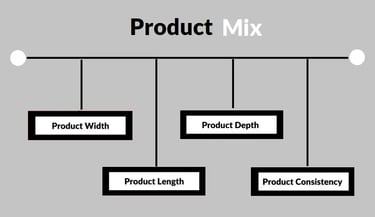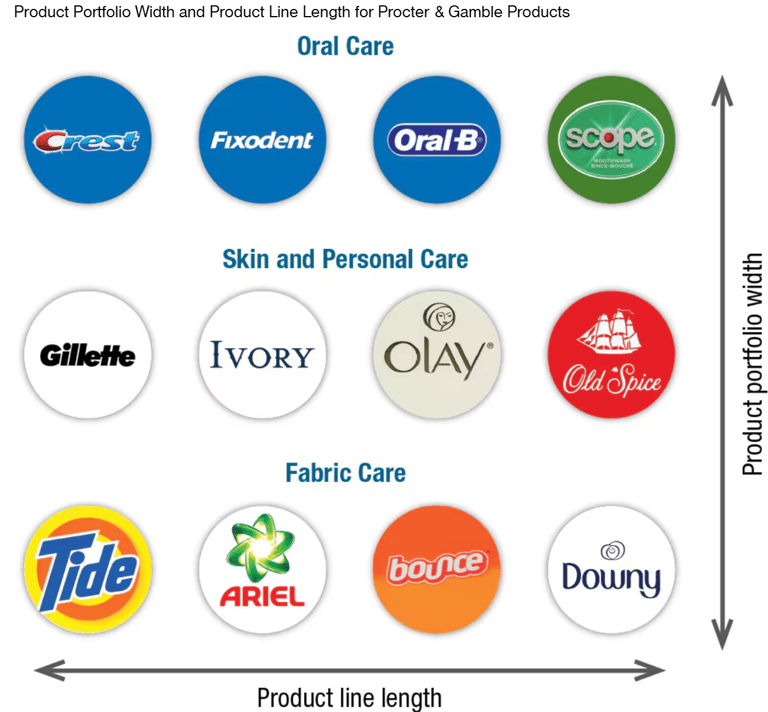The Heart of Your Business: Understanding the Value of Your Product
Discover why truly understanding your product’s value is the key to business success. This blog explores how your product solves customer pain points, differentiates from competitors, and creates lasting impact. Learn how to position your offering effectively, enhance customer perception, and drive growth by unlocking the true heart of your business—its core value proposition.
BLOGS
2/4/20256 min read
The Heart of Your Business: Understanding the Value of Your Product


In the world of business, the product lies at the very heart of any organization. It is the cornerstone that dictates customer satisfaction, drives revenue, and builds brand loyalty. In this blog, we will dive deep into understanding the nuances of products, including differentiation, portfolio design, strategy crafting, and measuring success.
Features of Product Differentiation
Differentiating your product is key to standing out in a crowded market. Here are the essential elements to consider:
1. Core Functionality
The core functionality refers to the fundamental purpose of a product—what problem it solves or need it fulfils. For instance, a smartphone serves as a communication device, enabling calls, messaging, and internet access.
2. Features
Additional attributes or functionalities that enhance the product's appeal fall under features. For example, Samsung Galaxy phones offer unique features like foldable screens and stylus support, setting them apart from competitors.
3. Performance Quality
Performance quality measures how well a product performs its intended function. A luxury car brand like Mercedes-Benz is known for high performance, delivering superior speed, comfort, and safety.
4. Conformance Quality
This aspect refers to a product meeting its specifications consistently. Toyota, for instance, is renowned for its reliable cars that rarely deviate from their advertised quality standards.
5. Durability
Durability highlights the lifespan of a product under normal conditions. Tupperware containers, known for their robust material, exemplify durability in consumer goods.
6. Reliability
Reliability refers to the product's ability to perform consistently over time. Canon cameras are celebrated for their dependability, making them a favorite among professionals.
7. Form
The physical appearance, including shape and size, contributes to the form. For instance, Coca-Cola's iconic glass bottle is instantly recognizable and plays a role in its market differentiation.
8. Style
Style pertains to the aesthetic design that makes a product visually appealing. Apple’s MacBook line combines sleek design with functionality, making it a symbol of innovation and luxury.
9. Customization
Customization allows products to meet specific customer needs. For example, Nike’s “By You” customization service lets customers design their own sneakers, adding a personal touch.
Product Portfolio Design
A well-structured product portfolio enables businesses to cater to diverse customer needs. The dimensions of product portfolio design include:
1. Width: The number of product lines the company offers.
2. Length: The total number of items within each product line.
3. Depth: The variety within a single product line, such as sizes, colors, or variants.
4. Consistency: The degree of similarity between product lines in terms of production, distribution, and usage.
Example: Procter & Gamble (P&G)
P&G’s portfolio includes product lines such as personal care, home care, and baby care, each with multiple variants and consistent quality. This approach ensures comprehensive market coverage while maintaining brand integrity.
Techniques for Lengthening Product Lines
1. Line stretching refers to the strategy of expanding an existing product line by adding new products. This can be done in several ways:
a. Line Stretching Down:
This technique involves adding lower-priced products to the product line. The purpose is to target a different, often more price-sensitive, market segment.
Example: A luxury car brand like Mercedes-Benz may introduce a lower-priced model such as the Mercedes-Benz A-Class to attract budget-conscious customers while still retaining its premium image.
b. Line Stretching Up:
This strategy entails adding higher-priced, more premium products to the existing product line. The goal is to appeal to a wealthier or more aspirational market segment.
Example: A company that sells budget smartphones, like Xiaomi, might introduce a premium range of phones (e.g., Xiaomi Mi or Mi Mix) to target affluent customers.
c. Line Stretching Both Ways:
This technique involves stretching the product line in both directions—adding both lower-priced and higher-priced products. It aims to serve a broad range of customers.
Example: Toyota has cars ranging from the low-cost Toyota Corolla to the high-end Toyota Land Cruiser, thereby appealing to a wide spectrum of buyers.
2. Line Filling
Line filling refers to adding more items within the existing range of products. This is typically done to fill gaps in the product line, where the company can target unmet needs or respond to customer demands without altering the overall price range.
Example: A soft drink company like Coca-Cola might add new flavors, such as Cherry Coke or Diet Coke, to fill gaps within their existing product line. They aren't changing the overall product category (soft drinks), but they are expanding within that range.
Crafting a Product Strategy
A strong product strategy aligns with business goals and guides development and marketing efforts. Let’s explore how to create an effective strategy:
A. Vision and Mission Alignment
Alignment with Goals: Ensure the product strategy complements the company’s overall vision and mission.
Clear Vision: A well-defined vision inspires innovation and guides decision-making in product development.
Successful Examples: Companies like Apple thrive with clear visions, such as creating products that seamlessly integrate design and functionality.
B. Product Roadmaps and Planning
Comprehensive Components: Include product vision, timelines, milestones, and feature sets in your roadmap.
Balancing Goals: Strike a balance between short-term deliverables and long-term objectives to maintain relevance and sustainability.
Adapting Plans: Continuously refine the roadmap based on market trends and customer feedback.
C. Launching Your Product
Launch Strategies: Plan pre-launch activities, teasers, and promotional campaigns to create buzz.
Marketing Importance: Invest in marketing to educate and excite your target audience.
Common Mistakes: Avoid underestimating competition, misjudging demand, or neglecting user testing before launch.
Measuring Product Success
Understanding the performance of your product is essential for continuous improvement. Here’s how to measure it effectively:
A. Key Performance Indicators (KPIs)
Identifying KPIs: Focus on metrics such as sales, market share, customer satisfaction, and profit margins.
Tracking Performance: Use analytics tools to monitor these metrics regularly.
Data Analysis: Analyze trends to identify strengths and areas for improvement.
B. Customer Feedback and Reviews
Role of Feedback: Customer reviews provide insights into product reception and areas needing enhancement.
Collection Methods: Use surveys, focus groups, and online reviews to gather data.
Utilizing Feedback: Implement changes based on constructive feedback to meet evolving customer expectations.
C. Continuous Improvement Processes
Iterative Strategies: Regularly update and improve product features to keep up with market demands.
Customer-Centric Changes: Prioritize adjustments based on customer insights and behavior.
Successful Examples: Brands like Hindustan Unilever continuously evolve their product lines, such as improving formulations in personal care products to meet customer preferences.
Conclusion
The product is truly the core of any offering, influencing business success, customer satisfaction, and brand reputation. A comprehensive understanding of what a product entails—along with its key elements, target market insights, strategic development, and success measurement—forms the foundation for effectively meeting customer needs and outperforming competition. By prioritizing the product in your business operations, you can create lasting value for both the company and its customers.


Frequently asked questions
What defines a successful product?
A successful product is one that effectively addresses customer needs, aligns with business objectives, and generates sustainable value. It should demonstrate strong market performance, such as high sales, robust customer satisfaction, and positive word-of-mouth. Additionally, a successful product often has a distinct competitive edge, achieved through superior features, quality, or innovation. For instance, Dyson has set benchmarks for product success with its cutting-edge vacuum technology.
How can I identify my target market?
To identify your target market, begin with comprehensive market research to understand consumer behavior, preferences, and purchasing habits. This includes analyzing demographic factors like age, gender, income, and geographic location. Behavioral insights, such as lifestyle choices and pain points, further refine your understanding. Tools like surveys, social media analytics, and focus groups can help create detailed customer personas. For example, Flipkart effectively segments its target market into urban and rural demographics, tailoring offerings accordingly.
Why is product feedback important?
Product feedback is vital for gaining actionable insights into customer experiences and expectations. It helps identify strengths to maintain and areas that need improvement, fostering product innovation and customer loyalty. Feedback channels include online reviews, direct surveys, and social media interactions. For instance, Zomato constantly updates its app features based on user feedback, enhancing usability and satisfaction.
What should be included in a product roadmap?
A product roadmap should outline the product vision, strategic objectives, and a timeline of key milestones. It should detail planned features, market entry strategies, and performance metrics. Roadmaps also need flexibility to adapt to evolving market demands. Successful examples include Tesla, whose roadmap emphasizes innovation milestones, from launching electric vehicles to enhancing autonomous driving technologies.
How can I measure the success of my product?
Measuring product success involves tracking relevant KPIs such as sales growth, customer retention rates, and market share. Customer satisfaction surveys and net promoter scores (NPS) provide qualitative insights. Advanced analytics tools, like Google Analytics for digital products or POS systems for retail, help monitor performance. Regularly reviewing these metrics ensures timely adjustments, as seen with brands like Nike, which leverages customer data to refine its product lines and marketing strategies.
Related Articles
Connect
Stay updated with our latest marketing insights.
Follow
Subscribe
+919818636980
© 2025. All rights reserved.
